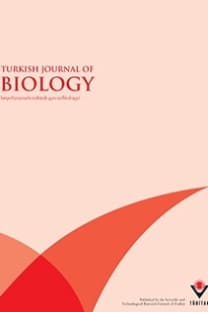The Antibacterial and Antifungal Effects of Rhododendron Derived Mad Honey and Extracts of Four Rhododendron Species
Antimicrobial activity, Rhododendron sp., mad honey, B. subtilis, S. aureus, E. coli, P. aeruginosa, C. albicans
The Antibacterial and Antifungal Effects of Rhododendron Derived Mad Honey and Extracts of Four Rhododendron Species
Antimicrobial activity, Rhododendron sp., mad honey, B. subtilis, S. aureus, E. coli, P. aeruginosa, C. albicans,
___
- 1. Majno G. The Healing Hand: Man and Wound in the Ancient World. Cambridge, Harvard University Press. 1975
- 2. Cavanagh D, Beazley J, Ostapowicz F. Radical operation for carcinoma of the vulva. A new approach to wound healing. The Journal of Obstetrics and Gynaecology 77: 1037-1040, 1970.
- 3. Blomfield R. Honey for decubitus ulcers. JAMA 224: 905, 1973.
- 4. Armon PJ. The use of honey in the treatment of infected wounds. Tropical Doctor 10: 91, 1980.
- 5. Farouk A, Hassan T, Kashif H et al. Studies on Sudanese bee honey: Laboratory and clinical evaluation. International Journal of Crude Drug Research. 26: 161-168, 1988.
- 6. Dustman JH. Antibacterial effect of honey. Apiacta 14: 7-11, 1978.
- 7. Molan PC, Smith IM, Reid GM. A comparison of the antibacterial activities of some New Zealand honeys. Journal of Apicultural Research. 27: 252-256, 1988.
- 8. El-Sukhan SN, Abu-Harfeil N, Sallal AK. Effect of honey on bacterial growth and spore germination. Journal of Food Protection 57: 918-920, 1994.
- 9. Stinson EE, Subers MH, Petty J et al. The composition of honey. V. Separation and identification of the organic acids. Archives of Biochemistry and Biophysics 89: 6-12, 1960.
- ISSN: 1300-0152
- Yayın Aralığı: 6
- Yayıncı: TÜBİTAK
Induced karyomorphological variations in three phenodeviants of Capsicum annuun L.
Sevanan RAJESHKUMAR, Mathan Chandran NISHA, Padanilly Chidambaram PRABU, Lakew WONDIMU, Thangavel SELVARAJ
Sevanan RAJESHKUMAR, Mathan Chandran NISHA, Padanilly CHIDAMBARAM PRABU, Lakew WONDIMU, Thangavel SELVARAJ
Antioxidant and Antibacterial Activity of Diospyros ebenum Roxb. Leaf Extracts
Yogesh BARAVALIA, Mital KANERIA, Yogeshkumar VAGHASIYA, Jigna PAREKH, Sumitra CHANDA
Induced Karyomorphological Variations in Three Phenodeviants of Capsicum annuum L.
Anjana SHARMA, Virendra Kumar PATEL
Antibacterial Activity of Seed Extracts of Commercial and Wild Lathyrus Species
Noor Afshan KHAN, Sadaf QUERESHI, Akhilesh PANDEY, Ashutosh SRIVASTAVA
Abdurrahman DÜNDAR, Abdunnasır YILDIZ
Ömer ERTÜRK, Fatma PEHLİVAN KARAKAŞ, Derya PEHLİVAN, Nurşah NAS
Serpil OĞUZTÜZÜN, Mesude İŞCAN, Müzeyyen ÖZHAVZALI, Serpil Dizbay SAK
